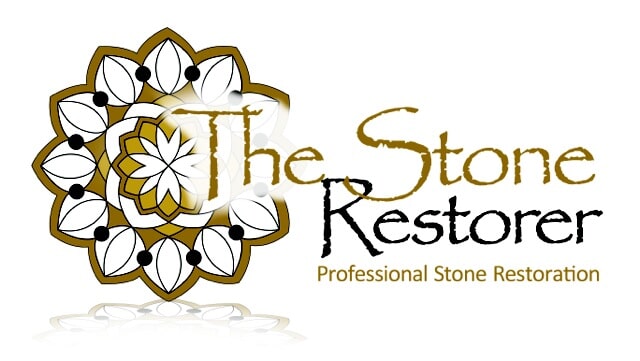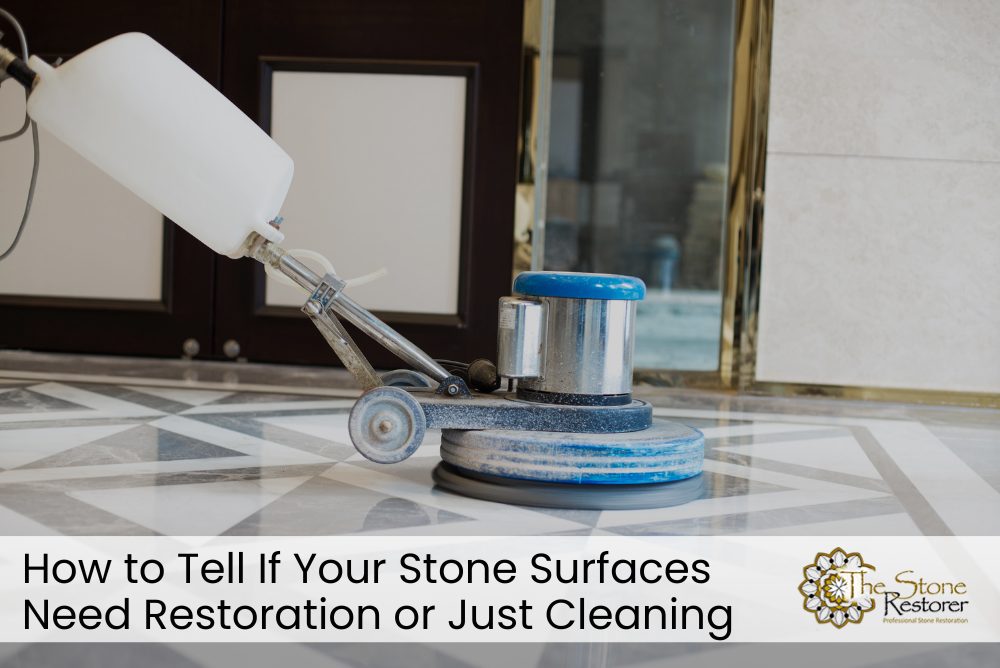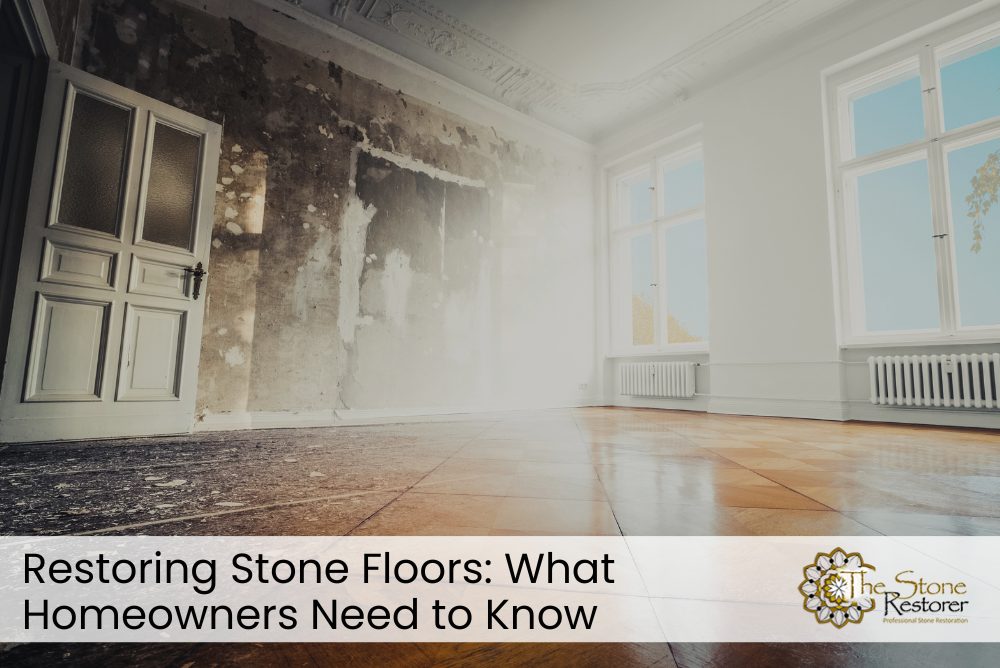Stone surfaces carry natural beauty that lasts—but only when they’re cleaned the right way. Over time, even the toughest stone loses its shine. Dirt builds up. Grout stains. Mould settles in. Floors become dull. Benchtops lose that smooth, polished feel.
That’s where expert cleaning comes in. Unlike basic mopping or home remedies, professional services go deeper. They restore what time, wear and DIY methods often ruin. Whether it’s marble, granite, travertine or limestone, every stone benefits from skilled treatment and the right approach to care.
As part of broader stone restoration work, cleaning sets the foundation for stronger surfaces and better finishes. This article explores how it works, what matters most and why it’s more than just removing grime.
The Value Behind Professional Stone Cleaning
Clean stone looks better, but that’s only part of the story. What matters more is what proper cleaning protects. Stains, scratches and erosion don’t just appear from one bad spill—they build slowly under dirt, grime and old sealers.
A professional cleaner doesn’t just wash a surface. They remove embedded contaminants, treat the stone without harm and prep it for sealing or polishing. That’s how they protect natural colour, restore traction and make repairs last longer.
Many homeowners assume regular mopping is enough. But water alone doesn’t clean grout or lift oil-based stains. In fact, improper cleaning often causes more damage. Acidic cleaners eat through polish. Abrasives scratch finishes. Left too long, some residues become permanent.
That’s where why professional stone tile cleaning is worth it becomes clear. For households, commercial buildings and heritage properties, the results aren’t just cosmetic—they’re structural.
Understanding Stone Types and Their Needs
Not all stone is created equal. What works for one surface could ruin another. A key part of cleaning is knowing what kind of stone you’re working with and how it reacts to pressure, water and cleaning agents.
For example:
- Marble is sensitive to acid and prone to etching
- Granite handles heat and pressure but needs sealing
- Travertine has holes that trap dirt and moisture
- Limestone is soft and absorbs liquids easily
- Slate has a natural cleft surface that hides grime
Each of these needs a different cleaning method. High-pressure tools can damage limestone. Strong chemicals may leave marks on marble. Gentle brushing may be needed to preserve texture in slate. A good technician adjusts their tools, products and methods for each surface.
In many homes, stone floors cover high-traffic areas like kitchens, hallways and patios. Understanding these variations helps cleaners choose the best products and avoid long-term damage. That’s why knowing the difference is central when choosing the best techniques for polishing limestone floors, and the same principle applies to any natural material.
How the Professional Cleaning Process Works
A typical professional clean goes far beyond a mop and bucket. It’s structured to remove dirt, restore texture and prepare the surface for ongoing maintenance.
The process usually follows these steps:
- Inspection – Identify the stone type, current condition and stains
- Pre-clean – Remove loose dirt or dust without water
- Application – Use a pH-neutral cleaner suited to the stone
- Agitation – Apply pressure through pads, brushes or rotary tools
- Extraction – Remove residues with minimal water or suction
- Drying – Allow time to fully dry before sealing or finishing
Grout lines are treated separately, often using targeted cleaners or steam to lift out deeper stains. In some cases, poultices are applied to draw oil or wine from porous surfaces.
A Brisbane office with sandstone flooring had years of built-up grime from foot traffic. The team used a combination of non-acidic cleaners and rotary brushes. After drying, the stone was sealed to lock in the result. The stone’s original tone returned, and surface traction improved for workplace safety.
These tailored approaches reflect the depth of planning that goes into top cleaning strategies for natural stone tiles where every surface tells a different story.
The Role of pH-Neutral Cleaners
Stone might seem tough, but it’s sensitive to the chemistry in cleaners. Acids break down calcium-based materials like marble and limestone. Alkaline products may strip protective sealers from granite and slate.
A pH-neutral cleaner—meaning neither acidic nor alkaline—protects both the surface and the finish. These are safe for regular use and still strong enough to lift common dirt, food stains and residues.
Many off-the-shelf products claim to be safe for stone, but even small imbalances can cause long-term issues. That’s why professionals test cleaners in small areas first and adjust strength depending on porosity and polish.
Ongoing use of the wrong cleaner can leave dull patches or cause tiles to fade unevenly. Once that happens, polishing might be needed to fix the damage. Using neutral cleaners from the start prevents this outcome and keeps the stone surface healthy between deeper cleanings.
Cleaning Challenges in High-Traffic and Outdoor Areas
Not all dirt is created equal. In high-traffic zones like commercial entries or shared corridors, stone collects oils, soil, sand and bacteria. Outdoors, UV rays, rain and organic matter like leaves add more pressure.
Outdoor stone—like bluestone paths or granite pool surrounds—needs extra attention. Leaf stains, moss and watermarks stick quickly. Power washing may help, but only when used at safe settings.
In one Melbourne café, the polished concrete floor near the entrance became slippery and stained over time. The cleaning crew used a wet-vac extraction method with a textured pad that gently lifted oils without damaging the finish. The floor not only looked brighter but became safer to walk on.
For ongoing care in these types of spaces, it’s not about cleaning harder—it’s about cleaning smarter. Choosing the right machines, pads and pressure levels makes all the difference.
Preparing Stone for Sealing After Cleaning
Stone isn’t ready to seal straight after cleaning. Moisture inside the tile needs to dry completely. If not, the sealer may trap it inside, leading to cloudy patches or uneven absorption.
Drying time depends on:
- The porosity of the stone
- The humidity of the room or outdoor space
- The type of cleaning method used
In some cases, drying agents or air movers are used to speed things up. Once dry, the stone is tested with small drops of water. If the surface doesn’t darken, it’s ready to seal.
This step is often rushed or skipped in DIY jobs, which leads to early failure of the sealant and recurring stains. A professional understands the importance of letting stone rest before moving on.
The Importance of Routine Maintenance
Professional cleaning sets a high baseline—but it still needs support. Without regular upkeep, even the best work fades faster. Maintenance doesn’t mean constant scrubbing—it means smart habits and using the right products.
Good habits include:
- Wiping up spills quickly
- Using coasters and mats in kitchens and bathrooms
- Avoiding acidic sprays, bleach or vinegar
- Mopping with a pH-neutral cleaner once a week
- Dry mopping or sweeping high-traffic areas daily
By keeping the surface free of grit, the stone avoids scratches. By using the correct mop heads or cloths, the sealant stays intact. For commercial sites, scheduled professional cleans twice a year help reduce wear.
One restorer shared a case where a hotel lobby switched to the correct cleaner and halved their cleaning frequency. Their polished marble floor stayed shiny longer, needed less buffing and held up better under constant foot traffic.
The Future of Stone Cleaning and Surface Care
Technology is beginning to change the way stone cleaning works. Automated scrubbers, cordless polishers and battery-powered vacs now allow work in tighter or more complex spaces.
Sealers are also improving. Many new formulations are water-based, low-odour and easier to reapply. Some even offer added UV protection or anti-slip finishes.
Advanced diagnostics are helping too. Moisture meters and thermal scanners assist in identifying water problems before they reach the surface. That makes for more targeted cleaning and less wasted time.
Looking ahead, expect stone cleaning to continue moving toward low-impact, eco-safe solutions that improve outcomes without damaging indoor air or nearby materials. What won’t change is the value of skilled eyes and steady hands behind every good result.
FAQs
1) Can household cleaning products damage natural stone?
Yes, many household cleaners are too harsh for natural stone. Products containing bleach, vinegar, ammonia or citrus often damage the surface by etching, discolouring or stripping the protective sealer. Acidic ingredients react with calcium-based stones like marble and limestone, leaving dull marks or surface roughness. Even cleaners labelled “multi-surface” may harm stone if they include abrasives or solvents. Over time, this damage builds and can lead to costly repairs or full resurfacing. To keep stone safe, only pH-neutral cleaners should be used—ideally ones designed specifically for stone. Professional-grade products remove grime without altering the finish. If damage has already occurred, polishing or re-sealing might be needed to restore the look and feel.
2) How often should natural stone surfaces be professionally cleaned?
Cleaning frequency depends on location, use and stone type. For residential homes, high-use areas like kitchens or bathrooms often need professional cleaning once every 12 to 18 months. Outdoor stone exposed to dirt, rain and organic matter may need attention every 6 to 12 months. Commercial or shared spaces like offices, restaurants or lobbies should consider quarterly cleaning due to higher foot traffic. Areas prone to stains, such as entryways or pool surrounds, benefit from more regular maintenance. It’s also smart to schedule cleaning before major events or inspections. Regular professional care doesn’t just keep stone looking fresh—it extends its lifespan by preventing long-term damage.
3) Is sealing always required after stone cleaning?
Sealing isn’t always needed—but it often is. The purpose of sealing is to protect the stone from future damage, especially in porous or high-use areas. After a deep clean, unsealed stone is left exposed and vulnerable to stains. In those cases, sealing adds a barrier that blocks moisture, oil and grime from setting in. However, not all stone types absorb sealers equally. Dense stones like granite may only need occasional sealing. Others, like sandstone or travertine, absorb more and need regular protection. A proper inspection will show whether the sealer is still active. If water beads on the surface, sealing may not be urgent. But if it soaks in, it’s time to reseal.
4) What’s the difference between polishing and cleaning stone?
Cleaning removes dirt, stains and surface residues using non-abrasive tools and gentle products. It doesn’t change the stone’s finish. Polishing, on the other hand, alters the stone’s surface to make it smoother or shinier. It uses fine abrasives and pads to remove small scratches and wear marks. Polishing may follow a clean if the stone is dull, etched or uneven. For example, a honed limestone floor may be cleaned, then lightly polished to restore a soft sheen. Polishing can also fix damage from acidic spills or heavy use. Both services are valuable, but they serve different purposes. Cleaning preserves what’s there—polishing brings it to the next level.
5) Can professional cleaning help with slip resistance?
Yes, professional cleaning often improves slip resistance, especially when removing oily residues or moss buildup. Dirty stone can feel slippery due to surface films, grease or worn finishes. By clearing out grime and restoring texture, traction improves. In some cases, non-slip treatments are added after cleaning. These create a micro-texture that’s invisible but adds grip underfoot. This is common in bathrooms, pool surrounds or commercial entries. It’s also useful in wet climates where algae or water stains are common. Keeping stone clean and sealed helps prevent slippery spots from forming. For best results, ongoing maintenance and reapplication of non-slip products should follow every deep clean.
A Lasting Shine Starts with Skilled Cleaning
Stone has a way of lifting a space. But when it’s dulled by grime, damaged by the wrong cleaner or worn out from years of use, that charm fades. Professional cleaning brings it back—not just for show, but for strength, safety and long-term value.
The work behind it is equal parts knowledge and craft. Knowing the stone. Picking the right method. Taking time to get the small things right. That’s what makes the real difference.
When it comes to protecting what matters, there’s nothing quite like a fresh, clean surface cared for by people who know the trade. Visit The Stone Restorer for reliable experience in bringing stone back to life, one clean at a time.
Give us a call today at 0414 469 301 or ask us for a fast free quote on your tile cleaning or restoration project






